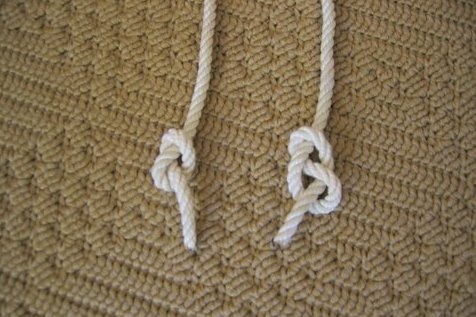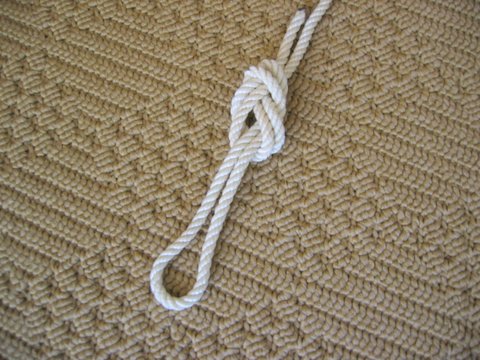
All knots have the effect of reducing the strength (breaking strenght) of a line due to the compression and distortion of the fibers with the knot under load. The "efficiency" of a knot describes the percentage of the breaking strength that remains in a line after the knot is formed.
A simple overhand knot, shown on the left in the photo below, is said to be 50% efficient, meaning it effectively reduces the strength of a line by half. By adding just one more twist, the figure of eight knot on the right reaches an efficiency of 80%, meaning eighty percent of the original strength is preserved. source:Wikipedia
NOTE: The actual efficiency of a knot depends on several factors, including line material. At least one study indicates that while the figure of eight knot nears 75% efficiency in Nylon line, it drops to 53% in Spectra (which is similar to Dyneema (c), the line often used in traction kites.) In any event, the figure of eight knot is still relatively more efficient than the simple overhand knot. source:www.Caves.org
 |
| Here are the simple overhand knot on the left and the figure of eight knot on the right. Both are left loose so you can better see how they are tied. The figure of eight knot preserves more line strength than the overhand knot and is less likely to pull out. photo (c) Angus Campbell |
 |
| You can form a loop in the end of a line by making a double figure of eight knot. Simply double the line and tie a normal figure of eight knot, keeping the doubled portions together as if they were one. photo (c) Angus Campbell |
| utah homes |